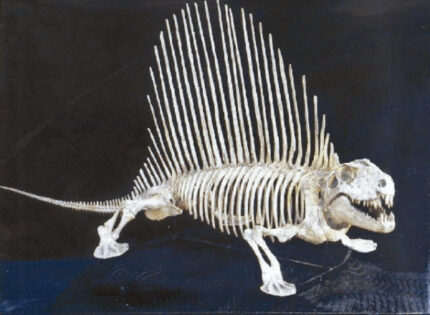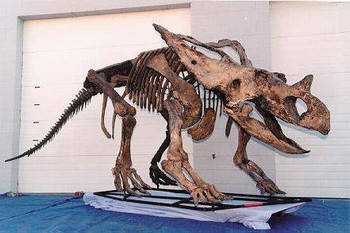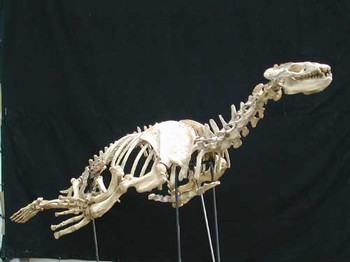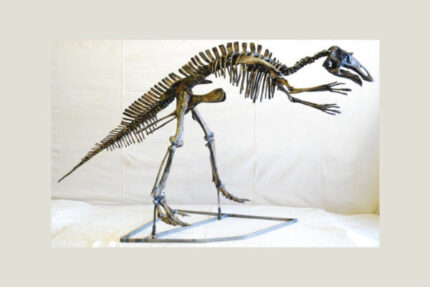Chalicothere Moropus Elatus Skeleton Replica measures 8ft – 2.5m length: 6ft -1.8m height. Chalicothere Moropus Elatus Skeleton is Museum quality polyurethane resins replica is made in the USA. Skeleton is Mounted. Please call 509-951-3557 for shipping quote. Our precise skeleton can be used as a teaching tool, museum skeleton exhibit, home décor skeleton, or office décor skeleton.
Unlike modern perissodactyls, chalicothere moropus or Chalicotherium had clawed feet. They had longer forelimbs and shorter hind limbs, lower incisors that cropped food against a toothless pad in the upper jaw, low-crowned molar teeth, and were browsers on trees and shrubs throughout their history. They evolved in two different directions, which became separate subfamilies, the Schizotheriinae and the Chalicotheriinae.
Schizotherine chalicotheres such as Moropus lived in a variety of forest, woodland, and savannah habitats in Asia, Africa, and North and Central America. They developed long necks and skull adaptations that suggest they had long, extensible tongues to reach browse, like those of giraffes.
Strong hindlimbs and an elongated pelvis suggest they could have reared upright as modern goats do, and used their front claws to pull branches within reach of the tongue. The claws were retractable, and they walked normally on the bottom of the foot. Studies of tooth wear suggest they ate leaves, twigs, fruit, and bark.
Chalicotheriines, such as Anisodon, lived only in moist, closed-canopy forests, never reached the Americas, and developed very unusual anatomy for an ungulate. Their shorter necks and horse-like heads did not show adaptations to reach high. Instead, they developed very long forelimbs with mobile shoulder joints and hooklike claws.
The pelvis and hindlimbs were specialized to stand upright, and to sit for hours while feeding, like the living gelada monkey. Some early paleontologists thought the claws were used to dig up roots and tubers, but their teeth were designed for soft foods, and studies of tooth wear show they ate fruit and seeds.
Their forelimbs were specialized to reach, grasp, and strip or sweep plants to the mouth. They could not retract the huge front claws, and knuckle-walked on their forelimbs.
The Chalicotheriines’ anatomical design, posture, and locomotion show convergence with other large browsers that feed selectively in a bipedal position, such as the ground sloths Megatherium and Megalonyx, gorillas, and giant pandas.
Chalicothere fossils are uncommon even in areas where other taxa of similar size are well-preserved, which suggests they were mostly solitary animals, and unlike horses, rhinos, and brontotheres, never evolved species that lived in herds.
Only two species of chalicothere are known from complete skeletons, the schizotheriine Moropus from the early Miocene of North America, and the Chalicotheriine Anisodon from the middle Miocene of Europe. Fossils of other species range from very fragmentary to moderately complete. Chalicotheres ranged in size from an antelope to a large draft horse.
Shop More Museum Quality Dinosaur Skeletons in Dinosaur Skeleton Store













Reviews
There are no reviews yet.